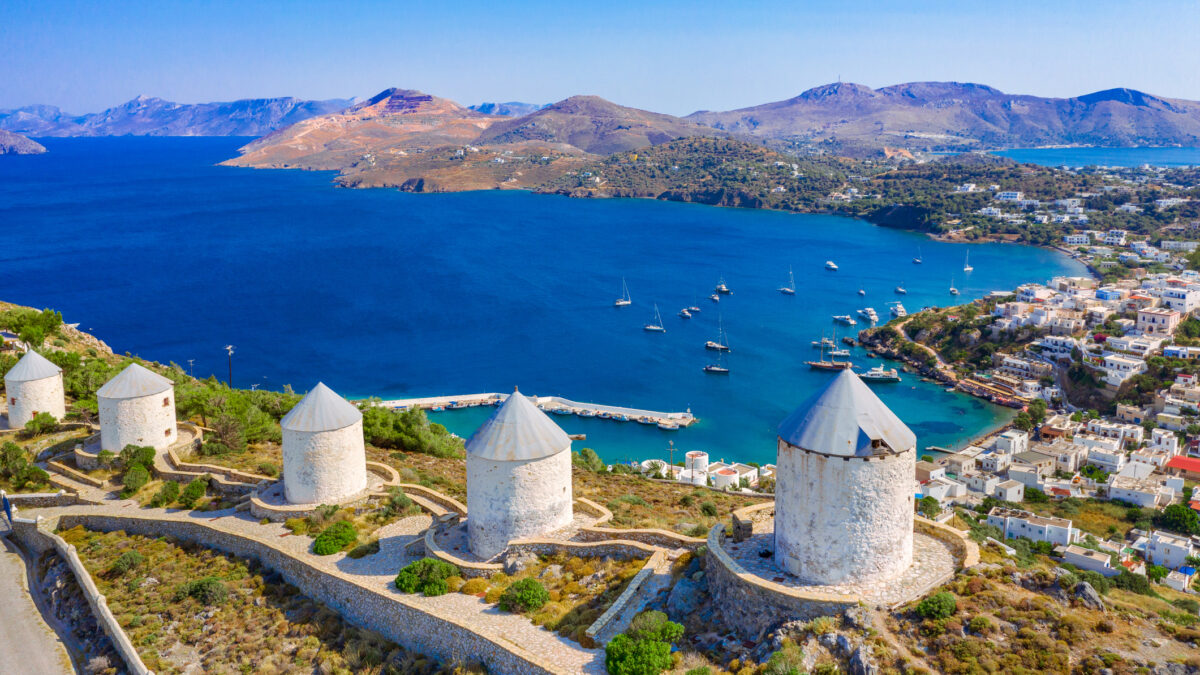Leros is located just northwest of Kalymnos in the southeastern Aegean and is part of the Dodecanese. It is a destination that remains untouched by mass tourism, ideal for visitors in search of peace and tranquillity, relaxation and unspoiled natural beauty. Leros boasts a rich and extensive history stretching from antiquity to the modern age. According to mythology, the island was sacred to the goddess Artemis and owes its name to its flat landscape. The island is notably devoid of mountains or elevations, except for low-lying hills; its highest point is Kleidi, where visitors can take in stunning views of the sea and the surrounding islands. The 11th-century Castle of Panagia is another prime destination for visitors who wish to enjoy a beautiful view. Homer counted Leros among the islands which participated in the Trojan War, while Thucydides notes its strategic geographic location during the Peloponnesian War.
The capital of the island is Platanos, located close to Agia Marina and the Byzantine Castle of Panagia. With its seaside cafés, seafood restaurants and neoclassical architecture, Agia Marina is the island’s busiest town. Visitors can also drink in the island’s authentic spirit at Panteli, the famous fishing village with its picturesque seafood restaurants and traditional cafés. The next stop is Lakki. One of the Mediterranean’s largest natural harbours, its impressive architecture bears witness to the era of Italian rule on the island.
Leros has unique and diverse beaches with crystal-clear waters. Visitors can choose between organized or isolated destinations, the latter of which might just be the Aegean’s best-kept, and most striking, secret. Some of the best-known among these are Alinta, Agia Marina, Dyo Liskaria, Vromolithos, Gourna, and Agia Kioura. Visitors to Leros shouldn’t miss the opportunity to take a day cruise and visit the neighbouring small islands of Marathi, Arki and Lipsi.
Cuisine
Leros is a prominent culinary destination and one of the most important representatives of authentic Greek cuisine. The island’s long history and rich culture shine through in its traditional dishes and recipes, many of which have recently become more widely known. Fish and seafood are the main ingredients used in the local cuisine. Naturally, shellfish play a major role as well; the local mussels and oysters are particularly flavourful and a prominent part of the local diet. Herbs also feature prominently in the island’s cuisine, the local thyme, mint and oregano being particular favourites. Honey production has been a tradition on Leros for centuries. The island’s thyme honey has exceptional nutritional value and ranks high among the local products, thanks to its unique flavour profile and golden colour. The local pine and polyfloral honeys are also well worth a taste. Standout dishes on Leros include its dumplings as well as its pies, such as the local cheese pie and patsavouropita. As far as sweets go, the local xerotigana, served with locally sourced honey, are exceptionally tasty.
How to get there
Leros is an island in the Dodecanese and is accessible by ferry from the port of Piraeus as well as by air.










